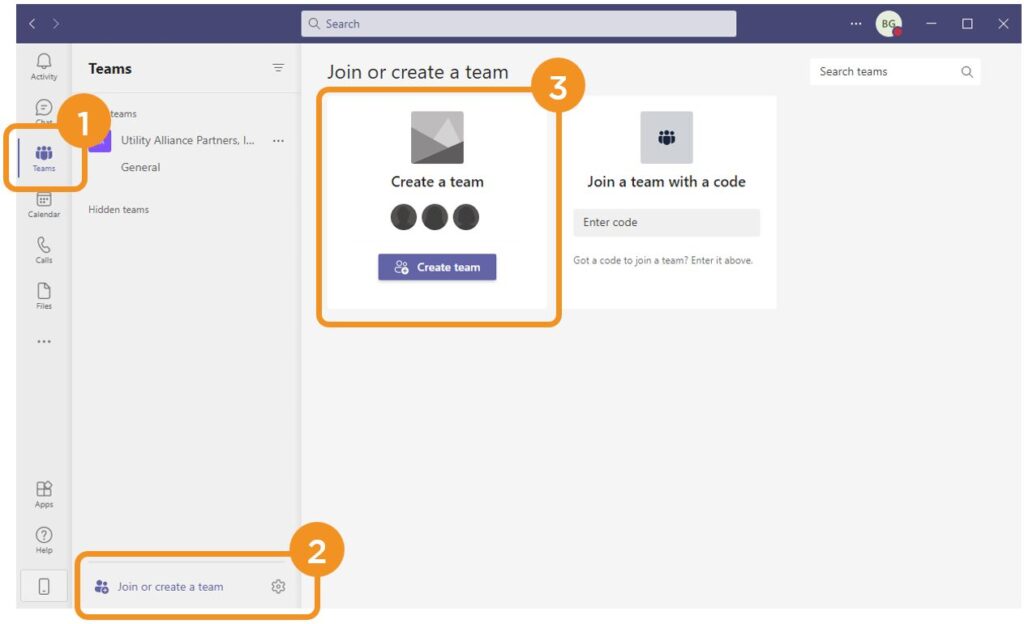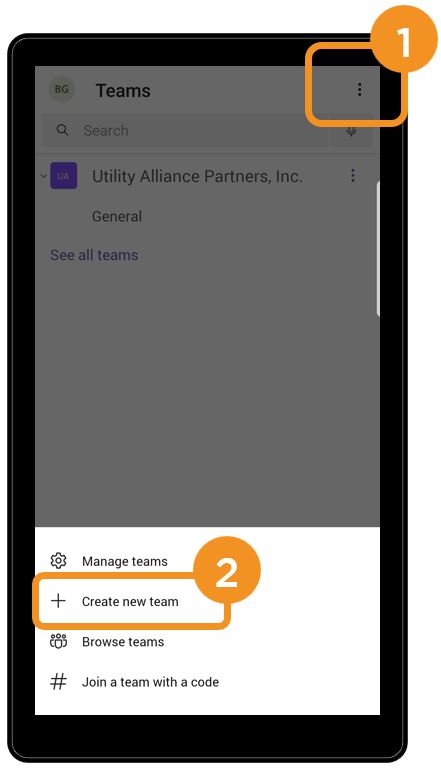Let’s start with an answer to the question: What are teams in Microsoft Teams? Then we can get into the details of creating a team in Microsoft Teams to help you and your colleagues to improve communication and efficiency while working remotely.
What are Teams in Microsoft Teams?
Imagine you work for a company that has multiple departments. Since the middle of 2020, you and your colleagues have all been working remotely and doing the best you can to keep the business moving forward. Maybe you have already been using the tool but don’t really know if you’re doing it right. You’re not alone!
Think of a new Team in Microsoft Teams as a group of people interested in the same topic. Within a Team you can create sub-groups or a Microsoft Teams Channel to help further organize the work this Team will do. This may be a Department and Specialties within it such as a Sales Department (Team) and Channels for the Website Design, Content Creation, Proposal Development and Sales Presentations. The idea here is that the Team is the total group of people while the Channels are where the work happens. This starts to make more sense as we get into more examples.
In the example above, it is very likely that individuals working remotely on the Website Design may also participate in Content Creation. As the Team Owner you will have control of who is able to see which Channels as well as how they can contribute. This is all permission details you can change later so let’s keep focused on the basic structure for now.
You may find that you need more detail, so rather than creating a team in Microsoft Teams for the whole Sales Department, you might want to create a team specific to Website Design and another for Content Creation. In this case, you can setup a Microsoft Teams Channel for each section of your website (i.e. Informational Pages, Products, Blog) under your Website Design Team. This allows you to create more detailed channels under your Content Creation Team specific to each line of business or type of product. This might work for most organizations, but let’s keep going!
Perhaps your Sales Department has a Proposal Development group that is split based on Industry and then Client. You may consider creating a team in Microsoft Teams specific for each Client. By doing so, you then have the opportunity to setup a Microsoft Teams Channel for each Request for Proposal (RFP) that you respond to. This helps keep Client information is one place and accessible for the next potential contract, yet it allows you and your team to organize specific details of each RFP separately.
The moral of the story is to think about what level of detail would be most appropriate for your organization and act accordingly. If you a juggling a few ideas, consider a free consultation with Utility Alliance Partners to discuss. This is the type of thing that we would be happy to quickly provide another perspective to help ensure you are making a fully informed decision.
Just to sum it up, what are teams in Microsoft Teams? They are a way for you to organize the work you do and divide it up with a Microsoft Teams Channel as needed.
Microsoft Teams Benefits
Just to make sure you understand what you are getting when creating a team in Microsoft Teams, here is a quick list.
• Teams & Channels
• Conversations within Channels & Teams
• Desktop & Mobile application versions
• Individual and group chat functionality
• Video calling and screen sharing
• Microsoft Teams meetings integrated with Outlook
• Audio conferencing and full telephony
The Microsoft Teams benefits don’t end there when you consider the integration options with other Office 365 tools as well as third party applications that can be very helpful when working remotely.
Creating a Team in Microsoft Teams
Now we will get into the steps in creating a team in Microsoft Teams. At this point I assume you have already visited the Microsoft Teams downloads and installed either the desktop application on your computer or mobile version on your smart phone. I also assume you have developed a plan for how you intend to structure your Teams and a related Microsoft Teams Channel. Remember, we are here to help!
You are able to get this all setup from either a desktop or mobile device but the user interface is a bit different. We like to be thorough so here are both:
Desktop

- Click on Teams from the left side menu.
- Click on Join or create a team at the bottom of the Teams panel.
- Click on Create team from the options presented.
(The other options is used when a Team is already created in your organization and you want in) - You will be presented with template options for creating your new Team that may be worth considering. You will be able to customize which ever template you choose so don’t worry about getting this option wrong. Once you select a template it will preview the Channels that will be created and the apps that will be installed. You can go back and select a different template if the preview doesn’t look appropriate. The From scratch option will be the simplest, the From a group or team option will copy a Team that is already in existence and the other templates have descriptions that are fairly self-explanatory.
- You will be asked if you want to make the Team Private or Public or in some cases, Org-wide. Only people in your organization will be able to join, but the difference is how they are invited.
a. Private means new Members need a special invitation from you, the Team Manager.
b. Public means anyone in your organization can join, but they need to seek it out.
c. Org-wide means everyone will be automatically added. - Name your Team and click Create
It may take a few minutes for your Team to be created but give it time, it will appear in the Teams panel. If you selected Public or Private, you can start adding team members to the team (Org-wide means everyone has already been added).
- Click on the three dots (known as the ellipsis) on the right side of your Team name. This will open a menu with the option to click Add member.
- Start typing a name or group and options will appear allowing you to add members. Click Add.
- Now you have the option to change each member privileges. Typically you want to leave this as Member unless you need help as the Owner to add or approve new Members.
- If you’d like, you can add members outside of your organization as guests.
An email will be sent letting each of the new Members know they have been added to the Team.
Mobile
Yes, you can do almost all of this on a smart phone as well! The steps are slightly different but it is fairly intuitive.

- Click on the three dots or ellipsis in the upper right corner to open a menu of options
- Click on Create new team
- You will be asked to name your team and provide a description if you would like. In this screen you will also have the option to select Private or Public. As mentioned above
a. Private means new Members need a special invitation from you, the Team Manager.
b. Public means anyone in your organization can join, but they need to seek it out.
c. The Org-wide option is not an available option when creating a team in Microsoft Teams mobile version. - Click the check at the upper right corner to create your Team
At this point you will be asked to add Members to your Team. You may start adding them now or add them from a desktop later, you have the flexibility to manage your team as you wish from any device that is most convenient for you.
Now you are ready to start working remotely in your new environment with a Microsoft Teams Channel for each sub-group to help organize your content. Enjoy!


Comments are closed